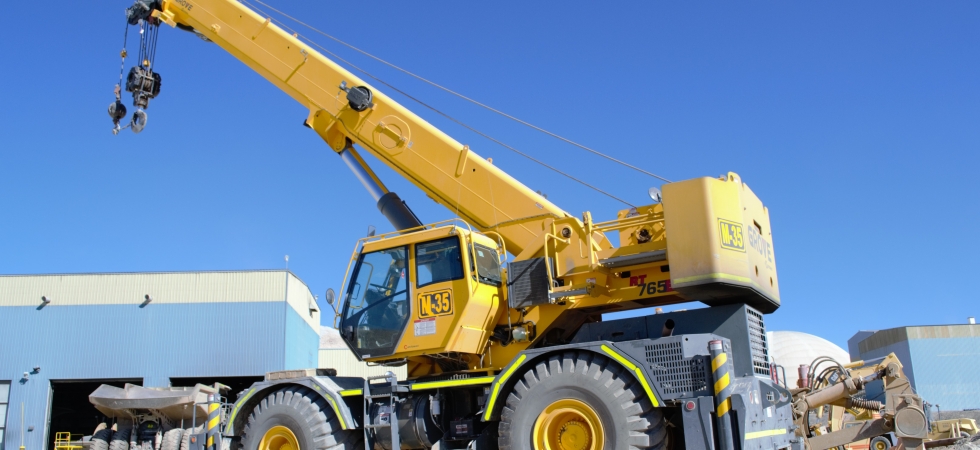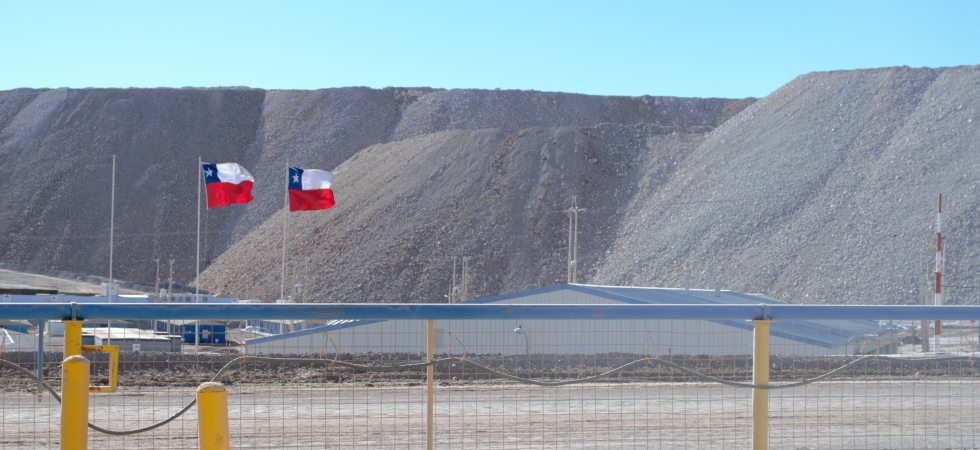
Grove puts in 20 years of hard work at Chilean mine
While it isn’t common for a mining company to own its cranes—upkeep and operational expenses are generally more efficiently handled by rental companies—Zaldívar has found numerous benefits from owning its own cranes. Its Grove cranes perform dutifully living up to their reputation for quality and reliability.
“We’re one of very few mines that still have a good condition 20 year-old Grove crane in use ” said Juan Olivares Cortes diesel engines specialist at Zaldívar. “Each piece of equipment has a very demanding life cycle in a mining environment. We need cranes that are ruggedly-built reliable and can withstand the geography and rhythm of a place like this.”
The first crane to arrive at the site a 50 t (55USt) capacity Grove RT855B proved it could endure the mine’s harsh environment and exemplify Grove’s reputation for quality. From then on Zaldívar added seven more Grove cranes of various capacities as work increased. The mine’s latest addition a RT765E-2 was built at Manitowoc’s Passo Fundo Brazil facility and it shines against the mine’s lunar horizon.
“Our Grove cranes install towers move containers carry electric components and perform a variety of other jobs around the mine so Zaldívar’s asset management team makes sure our cranes are fully operational for as long as possible ” Cortes said. “They travel dozens of miles on rough roads traversing steep grades and dealing with strong winds cold heat and dust that only well-built and durable cranes like Grove could withstand.”
The mine located 175 km (109 miles) east of the port city of Antofagasta one of the fastest-growing cities in Chile was built on a high plateau known as pre-Andes averaging 3 000 m (9 800 ft) tall.
The region is also one of driest places on Earth rarely seeing any rain. Extreme temperature changes dust storms and relentless winds are frequent. Machinery used at this height faces greater hardships and requires expert maintenance more often so than at lower heights.
Preventive maintenance and regional support
Zaldívar devised a team of high-level mechanics to tackle maintenance of its cranes by investing in a repair and upkeep shop right at the mine site. There the 20 year-old Grove RT855B rough-terrain crane still completely operational recently received its routine care at the hands of the shop’s specialists.
At the upkeep shop a team of engineers and mechanics assesses every crane that arrives to work at the mine. They study the cranes and learn all its systems and regulations to provide in-depth preventive and traditional maintenance. With the information collected the mechanics are able to calculate the crane’s life span and the costs associated with mining work to better prepare for its maintenance throughout the years.
Grove crane owners in Chile can also count on Manitowoc Crane Care’s service trucks one of which is stationed in nearby Antofagasta. Launched in mid-2014 the trucks provide on-site assistance even in remote locations. The vehicles are fitted with a 1.4 t (1.5 USt) lifting capacity service crane a comprehensive lubricating system a master grease pump and 200-psi air compressors.
Zaldívar is an open-pit heap-leach copper mine projected to remain in operation for another 15 years. It is located in Region II of northern Chile on a high plateau part of the Andes the longest continental mountain range in the world. The area is located approximately 1 400 km (870 miles) north of Santiago and 175 km (109 miles) southeast of the port city of Antofagasta. Copper production in 2015 is expected to be between 104 000-113 000 t (115 000-125 000 USt).
GROVE
Grove is the world leader in mobile cranes. For nearly a century, Grove has delivered best-in-class performance and groundbreaking technology through its range of rough-terrain, all-terrain, truck-mounted, military, industrial and telescoping crawler cranes.



